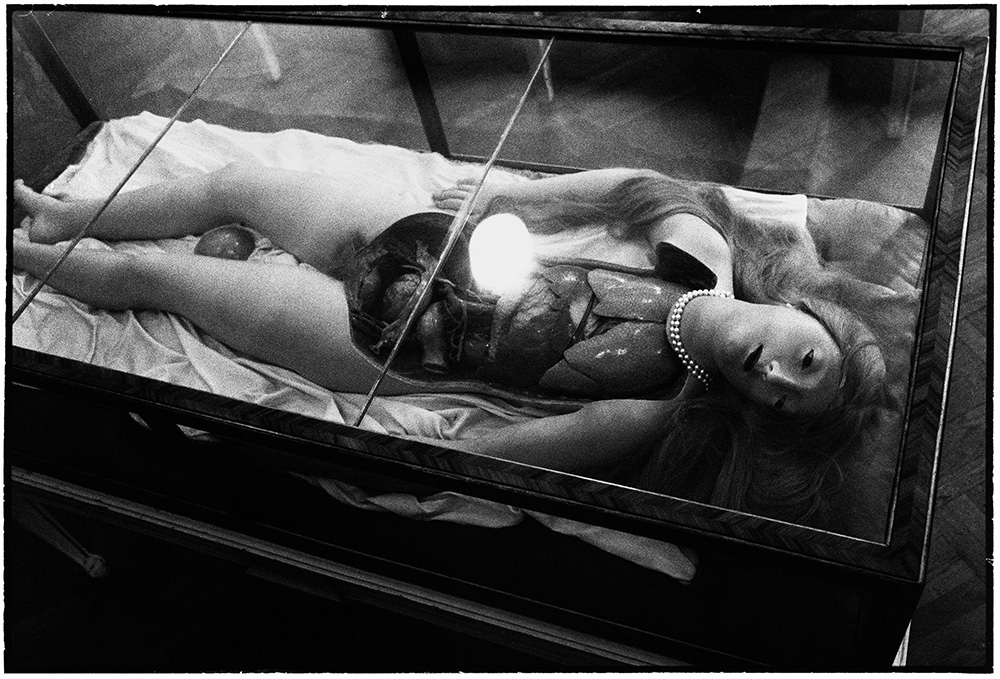ART CITIES:Los Angeles -Zoe Leonard
Zoe Leonard was born in Liberty, New York, in 1961. At age sixteen, she dropped out of high school and began to practice art independently. Working in photography, sculpture, and installation, Leonard explores the themes of seriality, loss, and mortality as well as the physical and social changes of landscapes over time.
By Efi Michalarou
Photo: MOCA Archive
The exhibition “Zoe Leonard: Survey” at the Museum of Contemporary Art, Los Angeles (MOCA) is a mid-career retrospective of the work of Zoe Leonard, one of the foremost artists of her generation. The exhibition brings together 100 key works from across Leonard’s career, dating from the mid-1980s until today. Among the installations to be presented is “Tree” (1997), a landmark work of the 1990s, composed of a tree carved into pieces and reassembled using metal plates, bolts, and wires, the work is a melancholic and meditative questioning of the intersection of nature and culture, while it also suggests themes of displacement, fragmentation, and reconstruction. Leonard was a vocal AIDS activist in New York during the 1980s and 1990s, an era that witnessed the loss of many in the art world. In “Strange Fruit (For David)” (1997), Leonard poignantly responds to this tragic history through an installation composed of dried fruit skins discarded seemingly at random on the gallery floor. The title of the work references the iconic anti-lynching song, written by Abel Meeropol in 1937 and whose most famous recording features Billie Holiday, and the installation’s dedication to the artist David Wojnarowicz who died of AIDS in 1992 reveals this strange fruit to be haunting symbols of those victimized by the virus and society at large. The decaying fruit also alludes to the art-historical tradition of the vanitas still-life, a genre of painting in which ephemeral objects such as flowers, flickering candles, and skulls were depicted to symbolize human mortality. Yet, closer inspection reveals that Leonard has sutured the fruit back together with needle and thread. This process of decay and repair is also explored in her installation “Mouth Open, Teeth Showing” (2001), which presents a standing array of 162 dolls that she had collected from yard sales and flea markets beginning in 1999. The artist was struck by the evidence of wear and alterations inscribed on the dolls, which she interpreted as the physical traces of their owner’s autobiographies and the passage of time. “Analogue” (1998–2007), a photographic series shot over a ten-year period, documents the facades of small storefronts and shop windows on New York’s Lower East Side, many of which would soon disappear in the wake of gentrification. Shot with a vintage Rolleiflex camera, the series creates a melancholic link between form and content as her analogue machine records a world that is becoming rapidly outmoded. In addition, the exhibition includes “1961” (2002-), vintage blue suitcases arranged in a single row. One of several sculptures Leonard made in the early 2000s, the work is unique in its additive nature. Leonard, who was born in 1961, adds a suitcase to this sculpture for each year of her life. In the “Suns” series (2011), Leonard defiantly turns her camera towards the sky, creating abstract and disorienting images in which the sun serves as both light source and subject. The works point towards Leonard’s longstanding practice of subverting traditional conventions of photography and her continuous questioning of how and what we see. Also the he exhibition highlight important works of photography from throughout Leonard’s career, including early aerial landscapes, images of subsistence hunting, and her signal work “The Fae Richards Photo Archive” (1993-96, the eighty-three photographs of The Fae Richards Photo Archive chronicle the fictional life of a queer Black singer and actress in the early twentieth century. Each photograph was staged for historical accuracy, printed to simulate the techniques of the era, and treated to give the appearance of age. The work is shown alongside photographs from the 1990s that address gender and sexuality within museum displays. In a newer installation titled “How to Take Good Pictures” (2018), Leonard has positioned more than 1,000 copies of the eponymous book, a how-to manual published from 1912 to 1998 by Kodak, in successive stacks on the gallery floor, arranged chronologically by edition. Walking from one end of the 20-foot-long installation to the other, a paradox emerges: The covers change many times throughout the book’s print run, a sign of the technological advances in printing techniques but the ideas that make up the book don’t. With each new edition, the book reiterates the same criteria for “good pictures”, and illustrates those standards with different sets of camera-carrying, well-to-do white people.
Info: Curator: Bennett Simpson, Assistant Curator: Rebecca Matalon, The Museum of Contemporary Art-Los Angeles (MOCA), The Geffen Contemporary, 152 North Central Avenue, Los Angeles, Duration: 11/11/18-25/3/19, Days & Hours: Days & Hours: Mon, Wed & Fri 11:00-18:00, Thu 11:00-20:00, Sat-Sun 11:00-17:00, www.moca.org







